Smarter transport A digital revolution for electric vehicles and mobility services










Change is happening outside London, and the clean growth revolution, with the automotive sector at its heart, is underway.
The urgent need to tackle poor air quality, free our cities of the blight of congestion and reduce the climate impact of transport, are pushing innovation in low carbon transport solutions, underpinned by digital technologies. The UK is well placed to lead this revolution, building on a strong automotive industry, cutting edge science base and a leading tech sector.
But, as this timely report emphasises, we cannot lead unless the right conditions are in place for businesses to thrive and compete on the global stage. They need to be able to scale up and invest in the smart, clean solutions that will keep them at the forefront of new developments in the sector.
The market is responding rapidly to new technology, and the government should be rewarding those businesses that invest and deliver. Through the industrial strategy, infrastructure spending and public procurement, both local authorities and the government can stimulate the sector to grow.
In the UK’s first ‘clean growth’ Local Industrial Strategy launched in the West Midlands, we have showcased the region’s commitments to future mobility with our expertise around digital, automotive, batteries and movement as a service.
As I said when I launched Green Alliance’s Tech Task Force analysis of the transport sector late last year, I want the West Midlands to be at the heart of a new Clean Industrial Revolution. By doing this, we can provide the blueprint for the rest of the UK.
Global trends are changing how businesses compete in the mobility sector. Efforts to cut emissions are forcing industry to develop innovative clean technologies and reliance on critical raw materials is making resource efficiency a strategic priority. The rise in new mobility services is also challenging business models based on private vehicle ownership.
Digital technologies could play a fundamental role in making businesses more competitive and resilient in this new landscape. Connectivity, information and optimisation opportunities could help UK manufacturers make better use of resources, adding to their bottom line. Smart fleets can complement public transport, while digitally enabled integration of electric vehicle (EV) batteries in the energy system can offer much needed low cost flexibility to the grid.
All this could move the UK towards a cleaner, smarter, more integrated transport system, supporting manufacturing productivity in lagging regions and employment growth in UK cities. It would help cut CO2 emissions from the largest emitting UK sector as well as reduce air pollution and congestion.
But few UK businesses are experimenting with these solutions and policy incentives to invest are limited. This sort of innovation will be critical for firms to remain competitive and, as other countries race ahead, switching to EVs and integrated transport, the UK risks falling behind.
Funding for R&D alone is not enough. To make the UK a world leader in the future of mobility, the government needs to:
1. Accelerate uptake of EVs and realising their value to a smart energy system. This should include policy to actively support EV and battery manufacturing in the UK and a zero emissions vehicle mandate, with sales targets rising to all vehicle sales by 2030; policy to promote digitally enabled battery reprocessing; and new regulation so EVs can provide flexibility to the grid.
2. Position the UK at the forefront of new mobility services. This includes clear guidance on how these services should support public transport; greater consumer access to walking and cycling infrastructure, shared mobility and public transport; and better use of data to support integrated transport.

Falling prices and growing consumer popularity mean global sales of EVs are forecast to increase five fold by 2025, and 14 fold by 2030. 1 Depending on when sales of petrol and diesel vehicles are banned, sales of EVs could range from 1.5 to 4.1 million EVs in 2025, and 3.9 to 12 million in 2030. 2 In any case, manufacturers plan to double the number of electric models available for sale by 2022.3
The UK exported over 80 per cent of the 1.5 million cars it produced in 2017 and is one of the largest manufacturers of EVs in Europe. 4 With more favourable policy, exports of low carbon vehicles could contribute as much as £95 billion to the UK economy by 2030. 5
At the same time, manufacturers’ material and energy costs are volatile and have been rising: they rose by 81 per cent between 2004 and 2018, against only a 17 per cent increase in wage costs. 6 To support the booming EV market, maintaining access to critical materials, such as cobalt and rare earth metals, will become vital.
The considerable environmental and human costs of mining these materials could lead to supply disruptions and reputational damage. As emphasised by the House of Commons BEIS Committee, “the risk of cobalt shortages has been identified as a major threat to global EV growth over the 2020s.” 7
Electric vehicles are growing rapidly, but there are resource risks
An earlier ban across EU countries on petrol and diesel vehicles sales could mean demand for eight million more electric vehicles in Europe8
New mobility services will catch up with car sales in value
In recent years, technology has enabled new models of vehicle use, such as car sharing and car clubs, as well as the integration of cars into the wider public transport system.9
This is changing the market: vehicle sales are slowing, younger people are less likely to own a car and members of car clubs are two to three times more likely to use public transport.10,11,12
Profits from mobility services are expected to grow. Research by Accenture shows that, over the next decade, revenues from global car manufacturing and sales will increase only marginally to €2 trillion, while those from mobility services will rise to about €1.2 trillion. And profits from mobility services are predicted to reach €220 billion against €122 billion from car sales.13
It is worth noting that the picture is not wholly consistent, as ride hailing services in the US are reported to have had a negative impact on public transport use and increased congestion.
Evidence so far suggests that expanding public transport, better integration of mobility services, as well as further measures such as congestion charging, could avoid these negative effects.14
Putting the right policies in place now will make sure this shift maximises the benefits to people and the environment in the UK. Replacing half of all private car trips with ride sharing vehicles could reduce congestion by 17 per cent and cut CO 2 emissions by 20 per cent, whilst also improving air quality.15 Compared to private car owners, shared mobility services will also more rapidly switch to EVs, accelerating the transition to a clean transport system.16
By 2030, profits linked to mobility services are expected to be much higher than those from car sales17
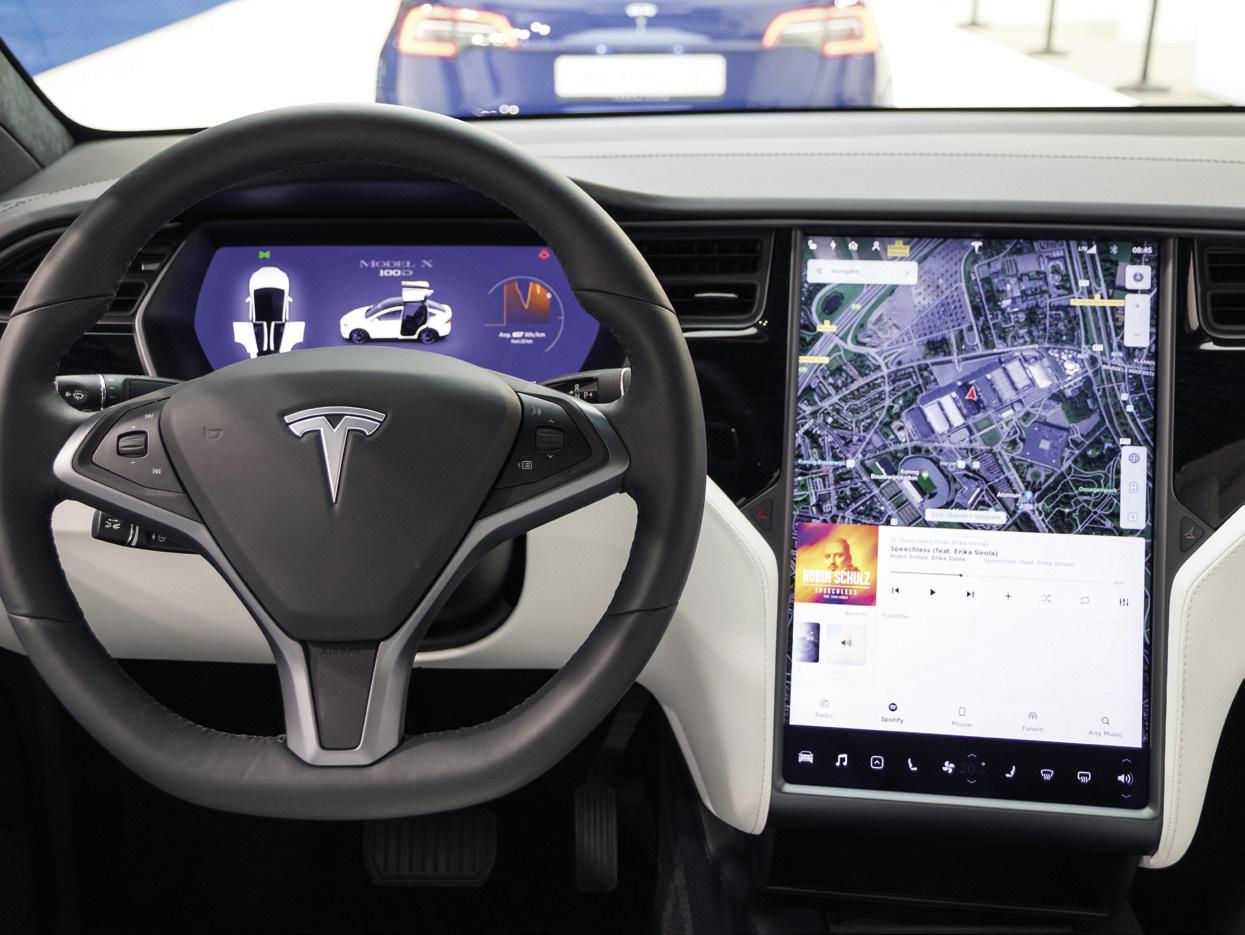
New digital technologies will play a critical role in the race to capitalise on the emerging EV and mobility services markets.
The connectivity, information and optimisation opportunities offered by digital technology can enhance business competitiveness and resilience by supporting novel solutions to clean, integrated transport.
Manufacturing competitiveness in future will depend on energy and resource efficiency. The average UK manufacturer spends five times more on resources than on labour, meaning resource efficiency offers much more scope to raise productivity than labour efficiency.18 It also helps the sector to decarbonise: reducing the steel, aluminium and other materials used to make cars, and minimising waste, could save over 14MtCO 2e between 2023 and 2032.19
Similarly, stockpiling spares requires large inventories, warehousing and logistical effort. The costs associated with these have a decisive impact on the business bottom line.20
The internet of things, data analytics and machine learning enable more energy and resource efficient production and better forecasting of demand for spares. Combined with additive manufacturing, they would also help manufacturers shift to on-demand production, reducing resource use, inventory costs and the need for expensive tooling.21
BMW is piloting the use of automation to move equipment and parts within a factory, as well as sensors and data analytics to monitor production through a digital twin (a digital replica that allows use to be monitored in real time). Thanks to these technologies, the company estimates it could halve production time, while using half the power and 70 per cent less water per car than their production average.23
Mercedes-Benz Trucks offers about 30 spare parts, produced with additive manufacturing using digital data records, for some of its models no longer in production. This has eliminated the need for tooling and cut storage and transport costs.24,25

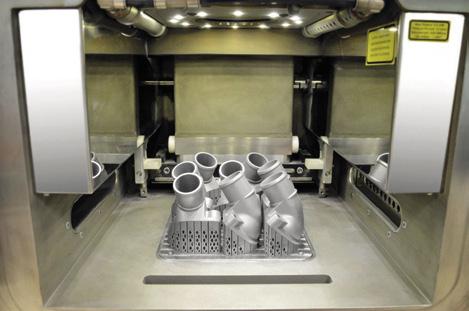
In the absence of smart technology, EVs could become a burden on local power networks. Without smart charging, the additional power demand could raise annual consumer bills by £30 on average.26
Smart charging would limit the need for network reinforcement and would also help to further the integration of renewables in the power system. Vehicle-to-grid (V2G) technology, in which electricity flows both to and from EVs to support the grid, could save the energy system in Great Britain up to £270 million a year by 2030 in avoided network upgrades and lower energy peak demand, based on conservative estimates.27 Smart algorithms (making use of distributed energy technologies, data analytics and machine learning) can further improve the predictability of demand and supply, enhancing the scope for energy storage and load management using EVs.28
Smart EV integration could save up to £270 million per year by 203029
UPS found that local network constraints were a barrier to its ability to switch its delivery fleet to EVs in London. But, by using battery storage, network monitoring and smart chargers, the local network can now accommodate three times as many EVs, allowing UPS to expand their fleet without grid reinforcement.30,31
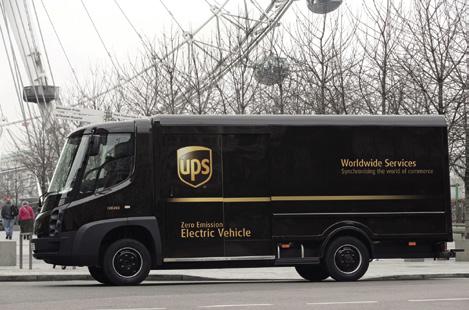
OVO Energy uses smart charging, V2G and machine learning to provide balancing services and charging when electricity is cheaper. Its algorithm is also able to analyse patterns of consumer behaviour to predict energy demand and automatically adjust charging, potentially saving EV drivers more than £250 per year.32

Batteries are one of the main expenses for EV manufacturers, both in production and at the end of a battery’s life. Smart management systems can optimise charging, discharging and maintenance. They can also determine the best time to repurpose batteries for stationary storage: EV batteries still retain 70-80 per cent of their capacity once they reach the end of their useful life in a car.33
Effective domestic recovery for batteries, supported by smart tracking and advanced recovery infrastructure, would allow valuable materials like cobalt to be recycled, providing a competitive advantage for UK car manufacturers. By 2035, the UK could supply about half of its domestic cobalt demand from used EV batteries.34
The UK could be sourcing about half of its cobalt from domestic EV batteries in 203535
Avoided cobalt imports
Potential for domestic recycled and reused cobalt 9.4kt
Cobalt imports for UK consumption 10.1kt
Cobalt from used batteries exported or lost if the UK continues business as usual
TWAICE , a German startup company, monitors battery health through a ‘digital twin’ (a digital replica that allows use to be monitored in real time and performance predicted). Using sensor data, analytics and machine learning, it helps manufacturers to improve battery design and fleet and energy systems operators to improve maintenance, based on real world data.36

ReLiB is a project of the Faraday Institution which is developing battery recycling technologies that will use sensors and machine learning systems to identify and enable the automated disassembly of battery components.37
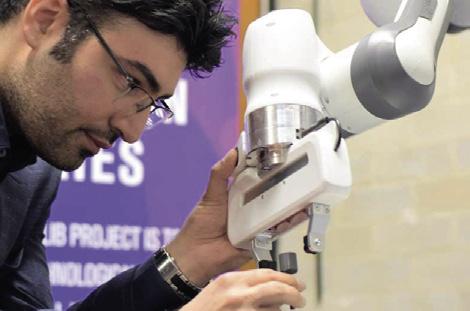
Consumer preference and city policies on air quality and traffic will drive the growth of new mobility services. Businesses will need to compete on convenience and optimal integration with existing public transport systems.38
Mobility platforms are developing innovative services using big data, smart sensors and distributed ledger technology to enable one way and peer to peer car sharing, and better modal integration.39,40
In the future, connected and autonomous vehicles could enable the combined use of shared, autonomous electric cars as part of integrated transport and energy systems. 41 By ensuring they effectively support public transport networks, new mobility services could improve the use of infrastructure and reduce congestion. 42
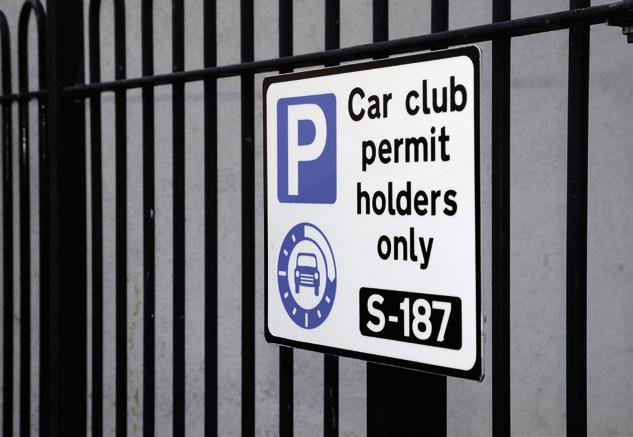
Transport for the West Midlands and the mobility app Whim are pioneering a new ‘mobility as a service’ scheme which incorporates public transit, Gett taxis, city bikes, rental cars and car clubs. By limiting the use of individual mobility services, their subscription package encourages customers to use all participating service providers. 43

Beverly Hills, in the US, is improving the city’s fibre optic cable networks to allow quick and cost effective integration of sensor technology for autonomous vehicles (AVs) and V2G communication. The aim is to create an on demand, city run AV shuttle service for first and last mile travel, to facilitate access to public transport and reduce traffic congestion and parking demand. 44
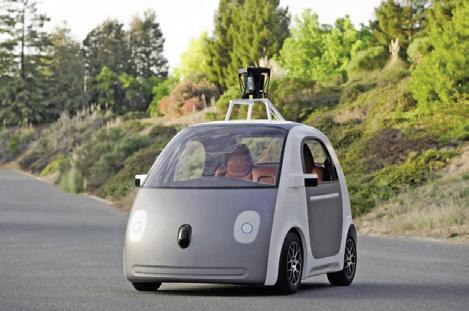
Private vehicles tend to sit idle most of the time. Much of the value of new mobility services comes from increasing vehicle usage, which will increase wear and tear.45 Predictive maintenance can help mobility businesses improve their fleets’ lifespan and reduce breakdowns. 46 Net global additional profits from remote diagnostics are estimated to reach £11 billion by 2025. 47
Smart sensors and data analytics could also help manufacturers to optimise component design, based on historical performance data, while real time information on their condition would help to predict the need for replacement parts and ensure their availability whenever needed. 48
Better maintenance and design can cut emissions from vehicle parts production by 57%49
Maintenance and design can help to extend vehicle life
Tesla is using the internet of things to fix and improve its cars remotely through software updates. Remote diagnostics also allow them to identify faults, what is needed to solve them, contact their customers when a part needs replacement and order the required components autonomously.50

CARFIT is a startup monitoring parameters such as noise and vibration of important wearing parts of a car, such as tyres, shock absorbers and brakes, and using machine learning to identify patterns of degradation and faults. Information is used for predictive maintenance as well as to inform manufacturers about areas for design improvement, based on historical data.51
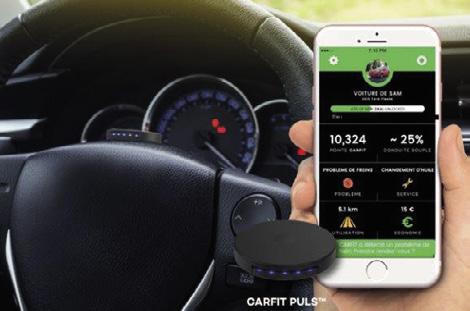
Congestion delays in UK urban centres are 70 per cent above the national average.52 Rather than investing in new roads, which generally increase the number of journeys, new digital applications allow the use of real time information to tackle congestion in existing road space, deferring expensive infrastructure upgrades. Real time data would also enhance the use of all transport services.53
Congestion blights most UK cities (congestion delays per mile driven)54
UK urban roads
81 seconds per mile driven
UK average
47 seconds per mile driven
Didi, a ride-hailing application in China, shares data from smart traffic signals with transport authorities to optimise traffic light changes in real time. The app has reduced delays by an estimated 11 per cent in the city of Jinan.55

Highways England’s Active Traffic Management (ATM) system, piloted between junctions of the M42 near Birmingham, uses real time monitoring technology to direct and control the flow of traffic. At only 20 per cent of the cost of widening the road, this approach has cut journey times by 25 per cent, pollution by ten per cent and fuel consumption by four per cent.56
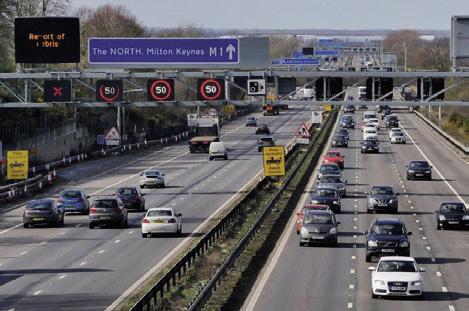
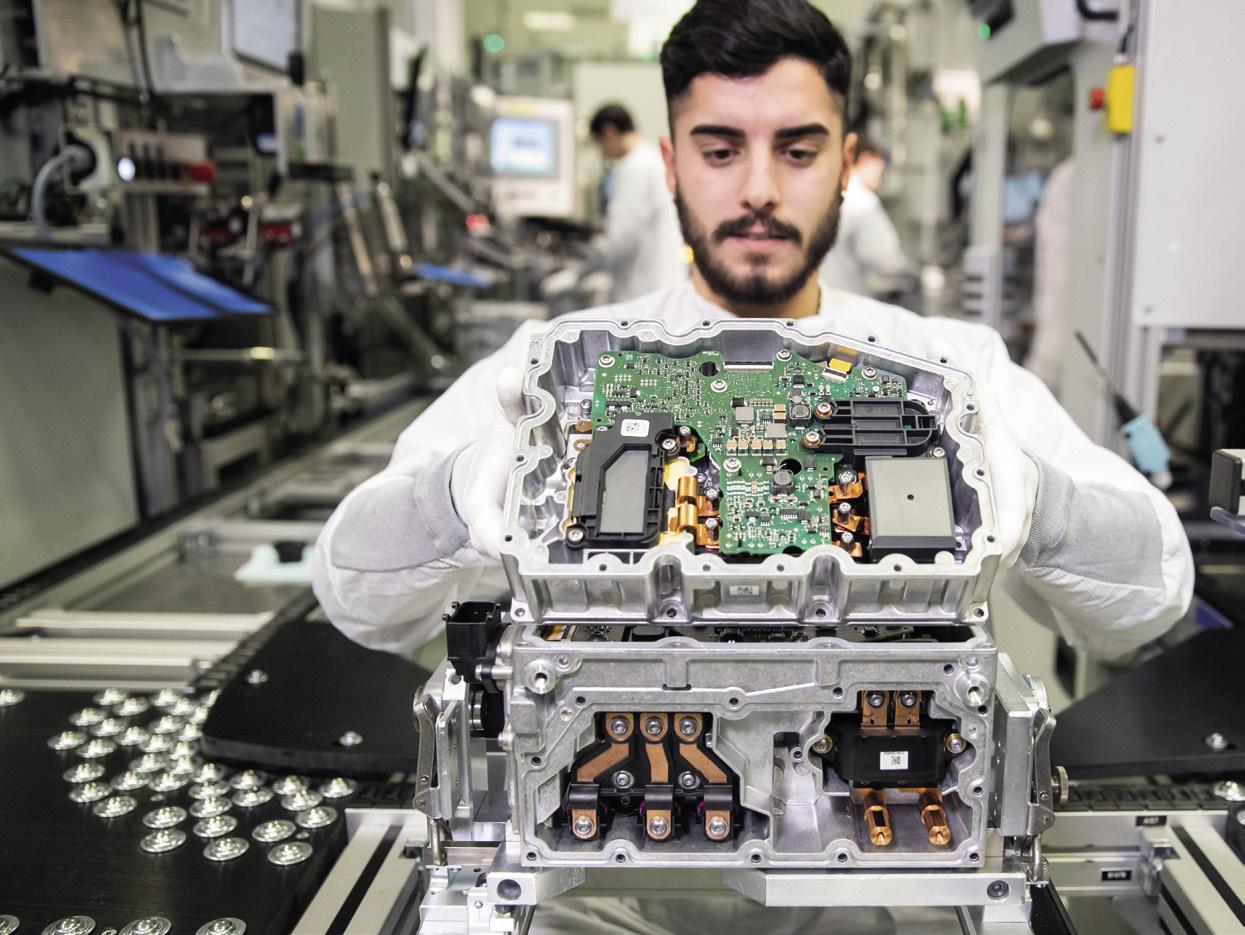
The UK has a productivity problem, with large differences in performance across regions. Smart clean growth in the transport sector has the potential to help address the north south divide and to do it in a futureproof way, supporting investment in the transport systems needed for a low carbon world.
Raising manufacturing productivity will benefit the regions lagging behind the most
Transport related manufacturing represents a greater share of the economy in some regions with lower productivity.57
While manufacturing is not necessarily responsible for low productivity, improving performance in the automotive manufacturing sector, by encouraging investment in smart solutions to cut carbon and improve resource efficiency, would have a disproportionately positive effect in those regions lagging behind.
Transport manufacturing gross value added (as % of total GVA)
Regional economic performance (productivity index, UK = 100, 2017)
Sixty per cent of UK jobs are in cities and employment is expected to rise across many major urban centres over the coming decades. 58
Congestion could have a negative impact on this growth.59 Smart technology that enables the best use of existing transport infrastructure, combined with new services that promote greater public transport use, could help to alleviate congestion in urban centres.
UK cities with projected employment growth face transport capacity constraints60
High congestion, low employment growth
High congestion, high employment growth
Liverpool
Manchester
Birmingham
Hull
Preston
Nottingham
Sunderland
Tyneside
Stoke
Teesside
Solent
Leeds
Leicester
Bristol
Brighton
Sheffield
Reading
Norwich
Derby
Bournemouth
Coventry
Milton Keynes
Low congestion, low employment growth
Low congestion, high employment growth
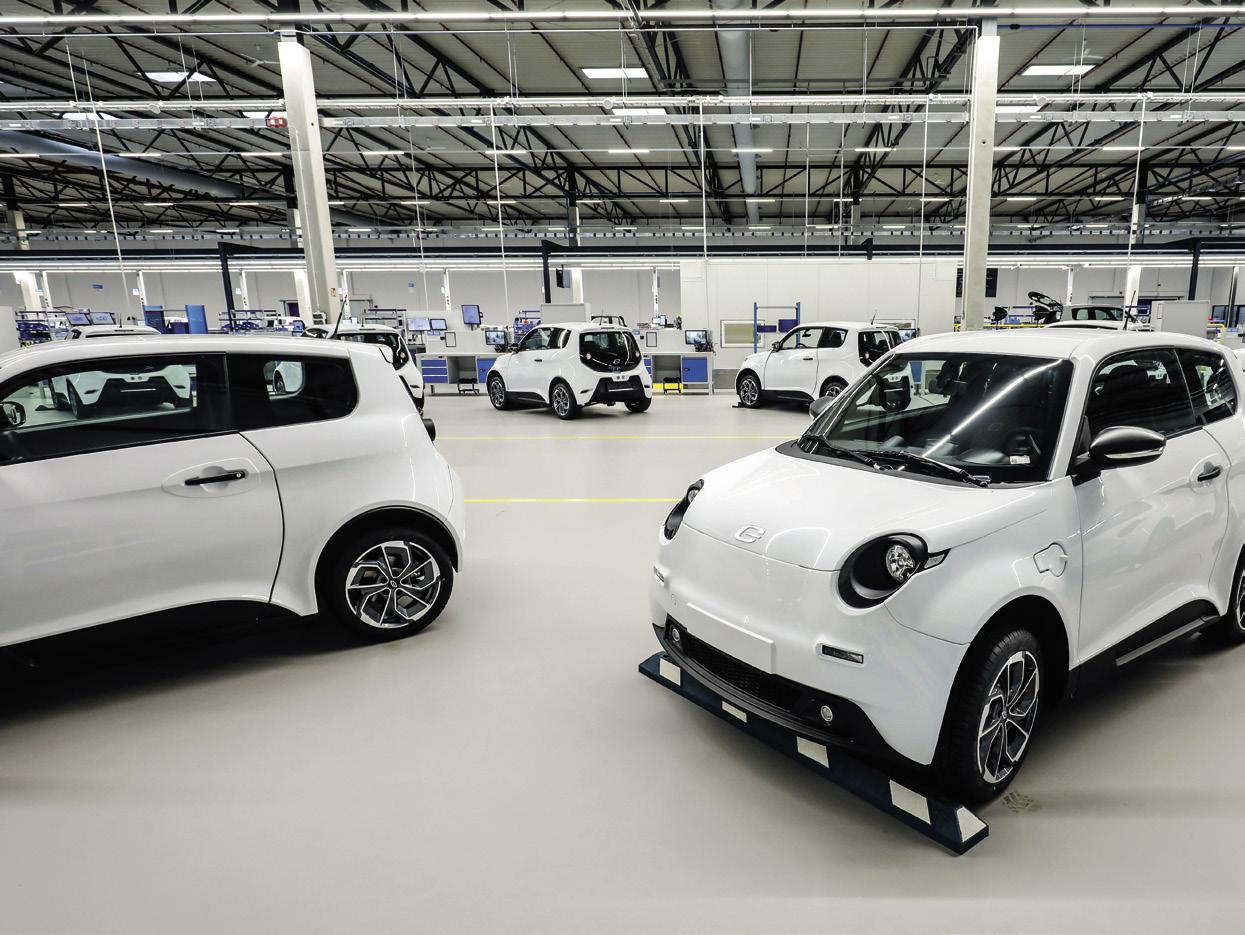
Businesses won’t drive change alone.61 The 2017 Made smarter review noted that, “Vehicle manufacturers… [have] only initiated a series of pilots so far. Some suppliers, notably SMEs, have not started any significant digital pilots”.62
This is because many opportunities involve new business models and supply chains not supported by current markets and regulation. UK transport policy is falling short.63
Incentives for manufacturers are limited
Uptake of digital technology for vehicle batteries in the UK already lags behind US and Chinese firms and the country currently attracts only a small fraction of global investments in EV manufacturing. A strong domestic market is critical to drive investment in manufacturing. The UK will end the sale of new fossil-fuelled vehicles from 2040. But this is not nearly as ambitious as other countries.64 Norway will ban conventional car sales from 2025, and China and the Netherlands from 2030.
The UK is also entirely dependent on imports of the critical raw materials essential for EV manufacturing. Poorly designed recycling targets and a lack of domestic reprocessing infrastructure mean that valuable battery materials, such as cobalt, are exported or lost in the recycling process. But, if they were kept in the system, they could provide a lower cost and more secure source of raw materials for UK industry.65
The current energy system does not properly value the flexibility that could be provided by EVs to local networks. Current regulations and market arrangements still prioritise flexibility from large scale power generation, reducing the potential to scale up innovative smart energy solutions.66
EV adoption is lagging
EV sales are stalling, in part due to lack of action by car manufacturers. UK drivers bought half as many fully electric cars as drivers in other EU countries last year.67 Furthermore, the availability of charging points is vital to encourage EV uptake. Yet, deployment of new infrastructure is uneven across the country: over half of the existing charging locations are located in London, the south east and Scotland.68
The government has showed hardly any commitment to sustainable transport, with policy generally prioritising new road infrastructure, despite evidence that more roads lead to more traffic. Without policy commitment and guidance to assist the transition to a clean, integrated transport system, new mobility services could either struggle to take off or undermine public transport and cause greater congestion, as has already happened in the US.69
Access to public transport and shared mobility is not the default Car dependency is double the rate of London in many places in the UK. Furthermore, as a result of planning incentives, many new housing developments have little access to public transport and infrastructure for walking and cycling, locking residents into ‘car-based living’.70
Data availability will be essential to develop new mobility services and ensure optimal integration in transport systems. For example, Finland has mandated that data on essential (public and private) transport services are made available to third parties through an open data application programming interface, to boost new mobility services. There is currently no similar incentive for transport operators in the UK to collect or share their data.71
As emphasised by the chief executive of the National Infrastructure Commission, while London benefits from “genuine devolution and long term funding […] the UK’s other cities face a fragmented and piecemeal system of funding”, resulting in “short termism and bid fatigue”.72 This reduces the opportunity to develop a long term strategy for integrated urban transport.
 Lewis Roberts on Unsplash
Lewis Roberts on Unsplash
Other countries are already acting to accelerate the transition to clean, integrated transport, enabled by digital technology.
To be a leader in the future of mobility, benefiting the economy, people’s health and the environment, the UK should set policy to maximise opportunities for the sector.
The government should bring forward the ban on new petrol and diesel vehicle sales to 2030 and set a progressive mandate for zero emission vehicle sales, similar to schemes in China and California. Boosting the market for EVs should go alongside policy to support domestic EV and battery manufacturing, including through business support for smart energy and resource efficient solutions. This could be delivered as part of the government’s industrial energy transformation fund and automotive sector deal. With support for EV adoption, these policies would drive manufacturing investment in the UK and boost uptake of smart technology solutions.
In the forthcoming revision of the producer responsibility system for EV batteries, the government should also set policy for better design, reuse and recycling, including establishing a digital database for tracking batteries. This would promote digitally enabled domestic reprocessing infrastructure and secure access to critical materials needed for low carbon technologies.73
Realising the full potential of EVs in a smart energy system requires new regulation to access flexibility
services. Ofgem should use the ongoing network charging and retail market reviews to promote markets for flexibility and encourage network operators to capitalise on the contribution of EVs, rather than buying stationary batteries or mandating network upgrades.74 The government should also enable access to energy flow data, critical to developing new flexibility services, in line with the recommendations of the Energy Data Taskforce.75
Greater EV adoption is important to give businesses the confidence to invest in innovative solutions. A network of charging points will be critical to drive uptake. The government should underwrite or mandate rapid charging infrastructure along motorways, to eliminate range anxiety for users and encourage investment in workplace charging. Furthermore, more funding is needed to sustain existing grants until genuine total life cost parity is achieved between pure battery electric and conventional vehicles, expected to be in the early to mid-2020s. Subsidies should be structured based on income, to ensure everyone can benefit from EVs, as recommended in our report Going electric: how everyone can benefit sooner. 76
In its Transport Decarbonisation Plan, the government should set out its vision for future travel demand and commit to investing £2 billion a year in walking and cycling infrastructure, and £1.3 billion additional annual expenditure on public transport. To speed up the development of new mobility services that support public transport and lower congestion, businesses need more clarity from the government. It should set out how it expects these services to complement public transport networks and contribute to its policy objectives, particularly on air quality and decarbonisation. And it should be prepared to regulate to achieve this.77
The effective use of mobility services will require greater investment in walking, cycling and public transport infrastructure, combined with clean air zones in major UK cities. Further measures include setting requirements for new residential developments to provide access to car sharing, preferential parking for shared EVs, close to public transport hubs for ‘last mile’ transport, or financial incentives for people to give up their cars and use integrated transport services instead, as is currently being trialled in the West Midlands.78
There should be open access to essential data for better transport infrastructure management by local authorities and to enable new service providers to complement existing transport options. Transport for London’s (TfL’s) open data powers more than 600 apps, used by 42 per cent of Londoners. It has enabled apps like Citymapper, to support transport services across the city. Data standards should avoid fragmentation and allow scale up across the country.79
New powers and funding should be given to support UK cities beyond London in aligning their housing, transport and development policies, and making better use of data for infrastructure management, particularly those facing congestion and high growth. Major cities and combined authorities should consider moving to a single governance structure for integrated transport modes, similar to TfL, while capacity and information support should be given to smaller centres and rural local authorities to make walking, cycling and integrated transport services the default option.80
1 Bloomberg New Energy Finance, 2019, 2019 EV outlook
2 Cambridge Econometrics, 2018, Fuelling Europe’s future ; Cambridge Econometrics and Element Energy, 2018, Low-carbon cars in Europe: A socio-economic assessment
3 Bloomberg New Energy Finance, 2018 EV outlook
4 SMMT, Key exports data , www.smmt.co.uk/ industry-topics/brexit/key-exports-data/
5 Green Alliance, 2018a, How the UK can lead the electric vehicle revolution
6 Office of National Statistics (ONS), 2019, material prices from: UK producer price inflation; labour prices from: UK unit wage costs , 2004-2018
7 House of Commons BEIS Committee, 2018, Electric vehicles: developing the market and infrastructure inquiry
8 Cambridge Econometrics and Element Energy, 2018, op cit; the scenario for the ban of conventional vehicle sales in 2040 refers to the central TECH scenario (which assumes both internal combustion engine and hybrid EV (HEV) new sales are banned from 2040); the faster adoption of EVs scenario refers to the TECH OEM scenario (which assumes stopping internal combustion engine vehicle sales in 2035 and HEVs in 2040, and is in line with recent OEM announcements and an ambitious view on policy)
9 Transport Systems Catapult, 2016, Mobility as a service: exploring the opportunity for mobility as a service in the UK
10 SMMT, 2018, UK automotive sustainability report
11 G Marsden, et al, 2018, All change? The future of travel demand and the implications for policy and planning, first report of the Commission on travel demand
12 SMMT, April 2019, UK car market falls in March as uncertainty undermines buyer confidence
13 Accenture, 2018, Mobility as a service: mapping a route toward future success in the new automotive ecosystem
14 G Rapier, 4 February 2019, ‘Uber and Lyft are having a terrible effect on public transportation, new research shows’, Business Insider ; G Marsden et al, 2018, op cit; Accenture, 2018, Mobility as a service: mapping a route toward future success in the new automotive ecosystem
15 According to the International Transport Forum, reported in SMMT, 2018, op cit
16 Bloomberg New Energy Finance, 2019, op cit
17 Accenture, 2018, op cit; profit values converted from euros to pound sterling using average conversion rate for 2018 of EUR1 = GBP 0.88471
18 Green Alliance, 2017, Lean and clean: building manufacturing excellence in the UK
19 Green Alliance, 2018, Less in more out: using resource efficiency to cut carbon and benefit the economy
20 D Beiderbeck, et al, 2018, The impact of additive manufacturing technologies on industrial spare parts strategies
21 Additive manufacturing is a set of techniques for layering materials into 3D forms.
22 Green Alliance, 2017, op cit
23 L Jukna, 12 October 2017, ‘BMW and the smart revolution in German manufacturing’, Living Map
24 J Williamson, 9 August 2017, ‘Mercedes announces “first 3D printed metal spare parts for trucks”’, The Manufacturer ; SMMT, August 2018, ‘Increasing number of CV manufacturers embracing 3D printed parts’
25 Additive Manufacturing Today, ‘MercedesBenz Trucks begins 3D printing replacement metal parts’
26 National Infrastructure Commission (NIC), 2018, National infrastructure assessment ; increase in average consumer bills by £30 refers to the period between 2030 and 2050
27 Element Energy, 2019, V2GB – Vehicle to Grid Britain: requirements for market scale up. Note that these are conservative estimates based on a slower uptake of EVs by 2030.
28 PwC, 2017, Innovating for the earth
29 Smart charging refers to unidirectional charging, while V2G includes smart charging with bidirectional flow. Estimates taken from Element Energy, 2019, op cit
30 National Infrastructure Commission, 2019, Better delivery: the challenge for freight
31 B Coyne, 11 April 2019, ‘EVs: How UPS is driving down emissions’, The Energyst
32 OVO Energy, VCharge platform information; D Pratt, 18 April 2018, ‘OVO Energy unveils domestic V2G charger in suite of new products’, Current
33 UK Parliament, April 2017, ‘Written evidence from Axion Recycling (ELV0043)’; NIC, 2018, op cit
34 Green Alliance, 2018b, Completing the circle: creating effective UK markets for recovered resources
35 Ibid
36 Twaice, 2019, Digital twins to solve your battery challenge
37 The Faraday Institution, July 2018, ReLiB: recycling of lithium-ion batteries, 1st four month review, https://relib.org.uk/
38 House of Commons, December 2018, Mobility as a service, eighth report of session 2017-19 , https://publications. parliament.uk/pa/cm201719/cmselect/ cmtrans/590/590.pdf
39 Distributed ledger technology enables to record and confirm transactions in a synchronise way across different devices.
40 House of Commons, December 2018, op cit
41 McKinsey & Company and Bloomberg, October 2016, An integrated perspective on the future of mobility
42 National Infrastructure Commission, 2018, op cit; National Infrastructure Commission, 2017a, Data for the public good
43 The Transport Knowledge Hub, Mobility as a service in the West Midlands and elsewhere
44 City of Beverly Hills, Autonomous vehicles
45 Advanced Propulsion Centre, 2018, Technology roadmap
46 Department for Transport, 2017, Freight carbon review
47 World Economic Forum and Accenture, 2016, Digital transformation of industries: automotive industry ; remote diagnostics are expected to add $60 billion of profits to OEMs, suppliers and telematics service providers, while dealers and independent service centres are predicted to lose $44 billion in profits
48 Deloitte, 2018, Disruption in the automotive industry: enhancing the customer experience
49 Graphic adapted from exhibit 5.9, page 133 in: Material Economics, 2018, The circular economy: a powerful force for climate mitigation
50 A Brisbourne, 2014, ‘Tesla’s over-the-air fix: best example yet of the internet of things?’, Wired; Tesla, Service; C Teague, 5 May 2019, ‘Tesla vehicles can now diagnose problems
and order replacement parts autonomously’, The Drive
51 Carfit, ‘Monitor and predict maintenance like never before’
52 National Infrastructure Commission, 2017b, Congestion, capacity, carbon, p74; congestion delays are over 80 seconds per mile driven on city centre A roads in major UK urban centres, compared to the national average of 46 seconds per mile.
53 National Infrastructure Commission, 2017a, op cit
54 Department for Transport, 2019, Average delay on local A roads (CGN0502)
55 P Sawers, 5 May 2017, ‘How China’s meshing ride-sharing data with smart traffic lights to ease road congestion’, Venture Beat
56 McKinsey, 2013, Infrastructure productivity: how to save $1 trillion per year, reported in NIC, 2017b, op cit
57 ONS, Regional Accounts via Nomis, Regional gross value added by industry, ‘Manufacturing of transport equipment gross value added’, 2017 data; ONS, Regional and subregional productivity, ‘Regional GVA per hour worked indices’, 2017 data
58 Centre for Cities, 2017, Cities outlook 2017, reported in NIC, 2017b, op cit
59 N Lomax and A Smith, 2018, Effect of capacity constraints on population and employment distribution; NIC, 2018, op cit
60 NIC, 2018, op cit, p79; graphic adapted from Figure 4.3: ‘Capacity constraints on the roads and employment growth projections for 2018-50 within city centres outside London’
61 EEF, 2016, The 4th industrial revolution: a primer for manufacturers. Eighty per cent of UK manufacturers think ‘industry 4.0’ will be a business reality by 2025, but only 11 per cent think their sector is ready to capitalise on these new opportunities.
62 Made smarter review, 2017, p147
63 L Tornatzky and M Fleischer, 1990, ‘The process of technological innovation’, Massachusetts: Lexington Books; S Norovuori, 2012, ‘Factors in ICT innovation’s diffusion from an environmental context perspective: the case of XBRL’
64 Green Alliance, 2018a, op cit; Oxford University news , 17 June 2019, ‘Can the UK take advantage of the electric vehicle revolution?’; P Lienert and C Chan, 10 January 2019, Reuters, graphics.reuters. com/AUTOS-INVESTMENTELECTRIC/010081ZB3HD/index.html
65 Green Alliance, 2018b, op cit
66 OVO Energy and Imperial College London, 2018, op cit
67 G Paton, 13 May 2019, ‘Electric car sales stall after cut to green grants’, The Times ; Transport & Environment, 2018, Carmakers
still failing to hit their own goals for sales of electric cars.
68 I Staffell et al, 2018, Energising Britain: progress, impacts and outlook for transforming Britain’s energy system, Drax Group
69 L Hopkinson and L Sloman, 2019, Getting the Department for Transport on the right track, Friends of the Earth and Transport for Quality of Life; G Rapier, 4 February 2019, op cit
70 Department for Transport, 2018, ‘Modal comparisons: usual method of travel to work by region of workplace’ (Great Britain, October to December 2017), table TSGB0109; Transport for new homes, July 2018, Project summary and recommendations; R Harrabin, 24 October 2018, ‘Young couples ‘trapped in car dependency’’, BBC News
71 House of Commons, December 2018, op cit
72 National Infrastructure Commission, 30 April 2019, ‘Phil Graham: speech to UK Infrastructure Show’
73 HM Government, December 2018, Our waste, our resources: a strategy for England; Element Energy, 2019, Batteries on wheels: the role of battery electric cars in the EU power system and beyond
74 Future Cities, Transport Systems, High Value Manufacturing and Energy Systems
Catapults on behalf of Innovate UK, 2017, Electric vehicles: towards an excellent user experience
75 Regen, 2018, Market insight series: harnessing the electric vehicle revolution; note that data should be shared in a manner that maintains appropriate levels of privacy and security.
76 Green Alliance, 2019, Going electric: how everyone can benefit sooner
77 Committee on Climate Change, 11 October 2018, Letter to Chris Grayling and Greg Clark – assessment of the Road to Zero Strategy; House of Commons, December 2018, op cit; Greenpeace, September 2019, ‘Government investment for a greener fairer economy’
78 Committee on Climate Change, May 2018, Future travel demand – making better policies; Transport and Environment, 2018, Integrating new mobility services in urban transport ; Dom Browne, 25 March 2019, ‘Drivers could earn up to £3,000 to ditch the car’, Transport Network
79 National Infrastructure Commission, 2017, op cit; Government Office for Science, 2019, A time of unprecedented change in the transport system, The Future of Mobility Foresight; note that data should be shared in a manner that maintains appropriate levels of privacy and security.
80 National Infrastructure Commission, 2018, op cit; Commission on Travel Demand, May 2018, op cit; L Sloman and L Hopkinson, 2019, Transforming public transport
Authors: Caterina Brandmayr and Melissa Petersen
Many thanks to Angela Francis and Dustin Benton for their help in shaping this report. We are also grateful to the attendees of our stakeholder workshop on smart clean growth in the mobility sector, and for additional input from the following experts: Stephen Joseph, Steven Altmann-Richer, Sukky Choongh-Campbell, Atte Riihelä, Andrew Allen, Lisa Hopkinson, Jonathan Hampson, Enrique Rodriguez.
Green Alliance’s Tech Task Force
This report was written by Green Alliance as part of our work programme for the Tech Task Force, a business led group convened by Green Alliance. It is a forum for policy innovation for clean growth that aims to lead policy discussions with ambitious business thinking.
Tech Task Force members include:
Green Alliance
Green Alliance is an independent think tank and charity focused on ambitious leadership for the environment. Since 1979, we have been working with the most influential leaders in business, NGOs and politics to accelerate political action and create transformative policy for a green and prosperous UK.
Green Alliance
11 Belgrave Road, London, SW1V 1RB 020 7233 7433
ga@green-alliance.org.uk www.green-alliance.org.uk
blog: greenallianceblog.org.uk
twitter: @GreenAllianceUK
The Green Alliance Trust
Registered charity no. 1045395 Company limited by guarantee (England and Wales) no. 3037633
Registered at the above address
Published by Green Alliance

November 2019
Designed by Howdy
ISBN: 978-1-912393-32-9
The analysis and recommendations in this report are solely those of Green Alliance and do not necessarily reflect the views of the experts consulted.
© Green Alliance, November 2019
Green Alliance’s work is licensed under a Creative Commons Attribution-Noncommercial-No derivative works 3.0 unported licence. This does not replace copyright but gives certain rights without having to ask Green Alliance for permission.
Under this licence, our work may be shared freely. This provides the freedom to copy, distribute and transmit this work on to others, provided Green Alliance is credited as the author and text is unaltered. This work must not be resold or used for commercial purposes. These conditions can be waived under certain circumstances with the written permission of Green Alliance. For more information about this licence go to http://creativecommons.org/ licenses/by-nc-nd/3.0/
Please note: our Creative Commons licence does not cover the use of any photographic images featured in this report which are subject to separate copyright and must not be shared or copied without permission.
Front cover pictures
Top right: Whim/MaaS Global
Bottom right: Raconteur